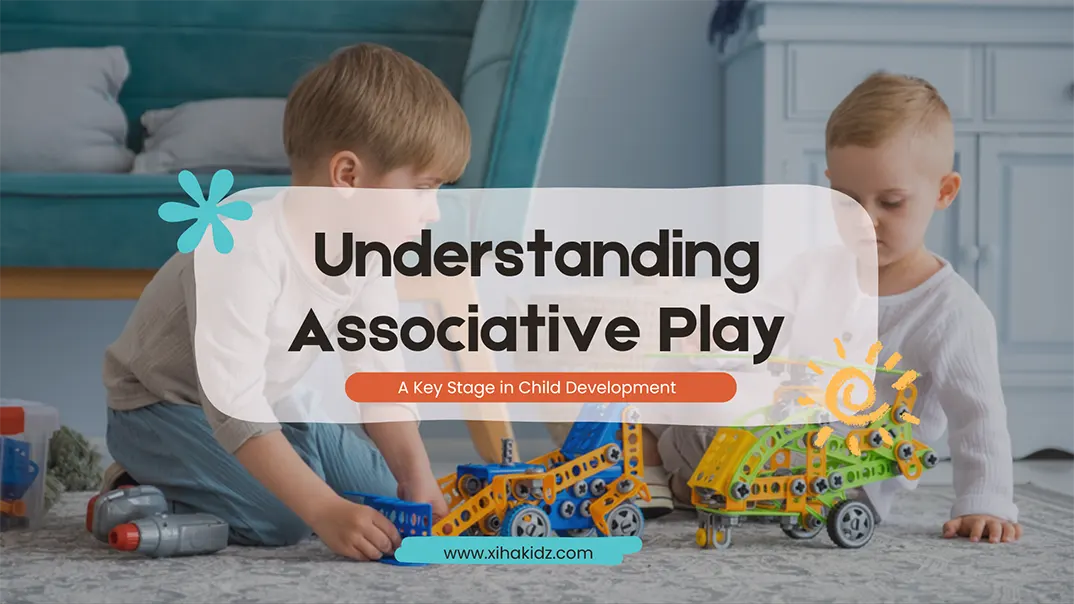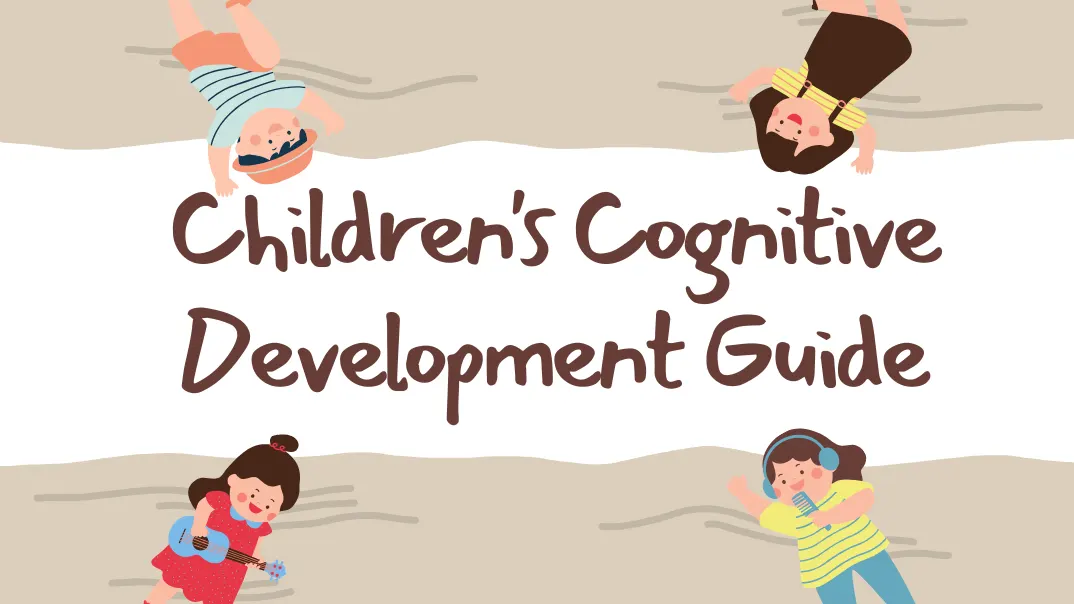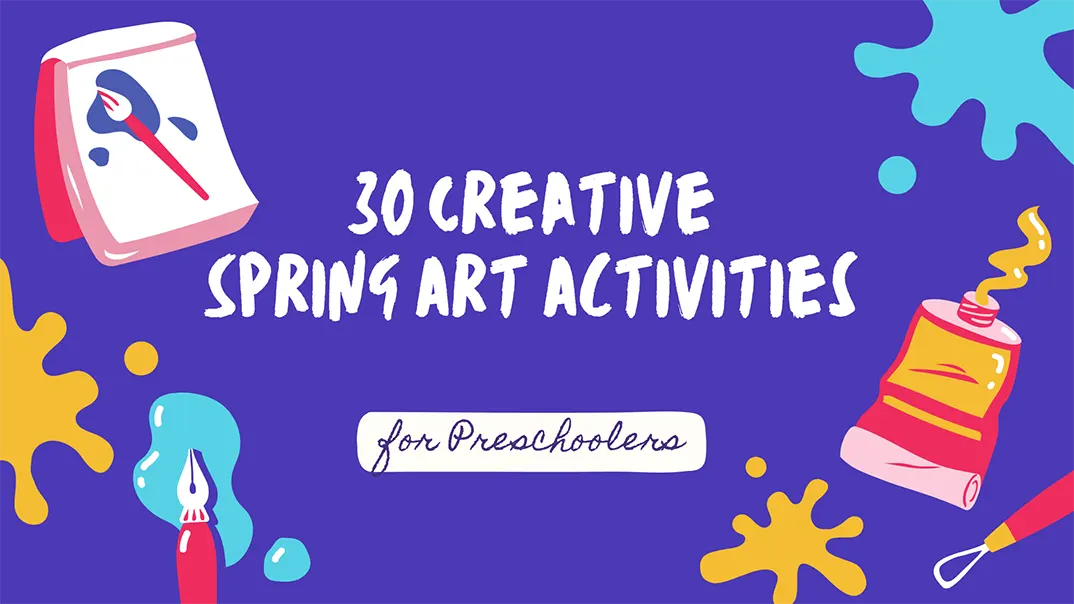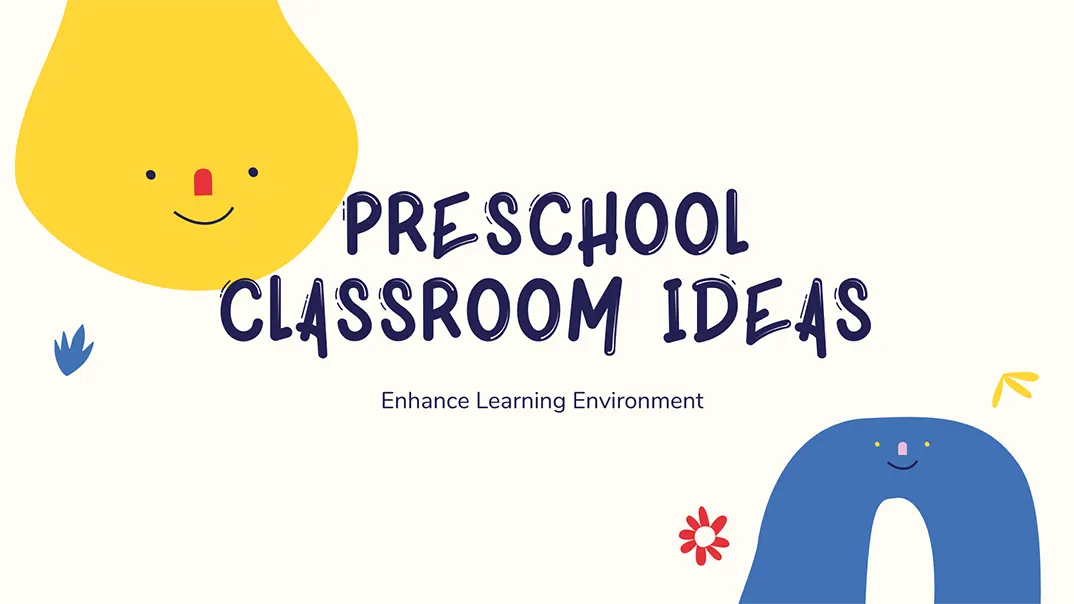Many parents and educators observe young children interacting with peers but struggle to identify whether these interactions contribute meaningfully to development. How exactly does associative play facilitate this growth? Adults might overlook critical opportunities to support a child’s social and emotional growth without understanding associative play.
Associative play, typically in preschool-aged children, is more than just kids playing near each other. It marks a shift toward cooperative interaction, communication, and the foundation of essential life skills. Recognizing and nurturing this phase can lead to better social development, increased emotional intelligence, and smoother transitions into formal learning environments.
In this article, we’ll dive deep into associative play, outline how it differs from other types of play, explain why it’s vital for child development, and offer actionable tips for parents and teachers to foster this key stage effectively. By the end, you’ll be equipped to better support the children in your care through one of the most socially enriching early learning phases.
What Is Associative Play?
Associative play is a pivotal stage in early childhood development when children engage with one another during activities without fully coordinating their actions or establishing common goals. The associative play definition refers to a form of social play that typically appears between the ages of 3 and 5, signaling the transition from independent or parallel play toward more cooperative forms of interaction.
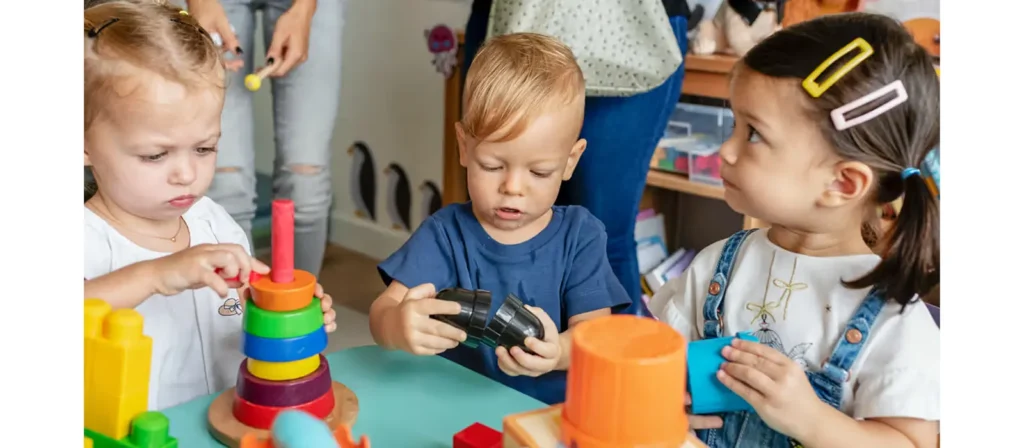
In this stage, children may share toys, comment on each other’s activities, and display interest in what their peers are doing. However, unlike cooperative play, associative play remains loosely structured, in which roles are assigned and objectives are shared. Each child acts independently within the shared environment, but clear social engagement occurs through conversation, imitation, and mutual awareness.
For example, two preschoolers might play with building blocks at the same table. They talk, laugh, exchange pieces, and even build side by side, but they don’t necessarily create a single structure. This seemingly casual interaction is significant in terms of social and cognitive growth.
Understanding the definition of associative play helps parents, caregivers, and educators recognize this subtle yet powerful shift in behavior. It represents a growing interest in relationships, the beginnings of empathy, and the desire to be part of a group—all foundational aspects of a child’s future social skills.
The Stages of Play in Early Childhood
Understanding associative play starts with seeing the full picture of how children’s social interactions evolve. According to developmental psychologist Mildred Parten, there are six recognized stages of play, each marking a significant step in a child’s emotional and social maturity. These stages are not strict categories but rather a natural progression that reflects a child’s growing ability to connect with others.

Unoccupied Play (Birth to 3 months)
This is the earliest form of play, typically seen in infants. A child appears to be making random movements without a clear purpose. While it might not look like “play” in the traditional sense, it’s a crucial time when babies learn to explore their environment and body movements.
Solitary Play (Birth to 2 years)
Children play alone with little interest in what others are doing. This is a vital period where toddlers explore their environment and develop focus, creativity, and fine motor skills without external social pressure. It’s a time of independence and self-discovery.
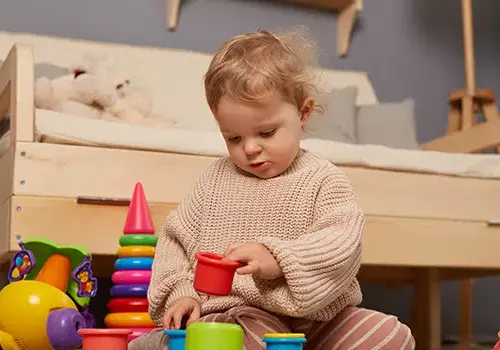
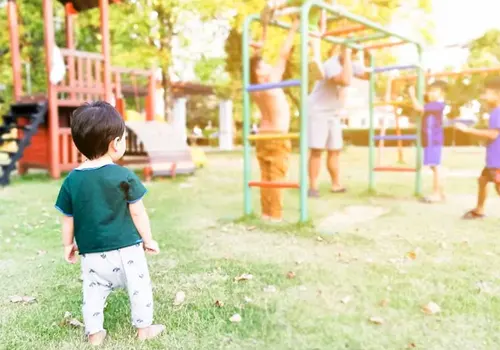
Onlooker Play (2 to 3 years)
Children watch others play in this phase but do not yet join in. They may observe how toys are used, or games are played, which sets the stage for more involved participation later. It’s not shyness—it’s learning by watching.
Parallel Play (2.5 to 3.5 years)
This type of play occurs when children play side by side, often with similar toys or activities, but without direct interaction. It’s common in toddlers and early preschoolers. Though they may not collaborate, they are beginning to notice and become influenced by the presence of others.


Associative Play (3 to 5 years)
This is the heart of our discussion. Associative play is when children interact more directly by talking, sharing materials, and doing similar activities without set rules. They start to form friendships, negotiate roles, and express their preferences. While it’s not as structured as team play, it helps develop empathy, communication, and social confidence.
Cooperative Play (4 to 6 years)
This is the most advanced stage, usually in older preschoolers or kindergarten-aged children. In cooperative play, children assign roles, work toward shared goals, and engage in complex games or make-believe scenarios. It requires teamwork, negotiation, and empathy—skills cultivated during the earlier associative play phase.

Transform Your Classroom with Custom Furniture Solutions
Key Characteristics of Associative Play
Identifying when a child has entered the associative play stage is crucial for parents, educators, and caregivers aiming to support healthy social development. While it may look unstructured, this stage is filled with meaningful social interactions and foundational behaviors that signal a growing awareness of others. Below are the key characteristics of associative play that help distinguish it from earlier forms like solitary or parallel play:
Shared Materials Not Shared Goals
Children may play with the same blocks, crayons, or dolls, but they’re not working toward the same objective. For instance, two children might be building towers with the same set of blocks, talking about their creations but not constructing one shared structure. They’re interested in what the other is doing, but the activity remains individually driven.
Verbal Interaction Becomes Central
This stage marks a huge leap in language development. Children talk to each other constantly during associative play—asking questions, making suggestions, or even narrating what they’re doing. You’ll hear spontaneous laughter, role-play discussions, or debates over who gets which toy. Communication is key, even if it’s not always logical or productive from an adult’s point of view.
Flexible Roles and Shifting Rules
There’s a growing interest in imaginative play, but rules are fluid. One moment, a child is the “teacher”; the next, they might become the “baby” in a pretend family game. These roles are often negotiated on the spot, with little consistency. That’s part of the magic of this stage—it’s all about experimenting with identity and interaction.
Social Awareness Without Formal Cooperation
Children begin to express interest in what their peers are doing. They watch, comment, mimic, and sometimes even offer help without structured coordination. It’s not quite teamwork yet, but it’s a crucial step toward it. These social touches help build empathy, confidence, and early negotiation skills.
Emotional Expression and Peer Influence
Through associative play, children begin to recognize emotions in others. You’ll see kids comfort a crying peer, mimic emotional reactions (“You’re sad? I’m sad too!”), or show joy when someone else is laughing. Emotional responses become interpersonal, not just internal. This is a strong foundation for later social-emotional learning.
Increased Interest in Group Activities
Although not fully cooperative, children in associative play are drawn to group settings. They may join others uninvited or drift between different play groups. They want to be near other children, talk, observe, and imitate—even if they’re not yet part of a shared objective.
Why Is Associative Play So Important?
You might wonder why associative play greatly affects a child’s development. After all, it may seem like children simply chat and play side by side without much structure. But make no mistake, this seemingly unorganized play is critical for shaping a child’s social, emotional, and cognitive growth.
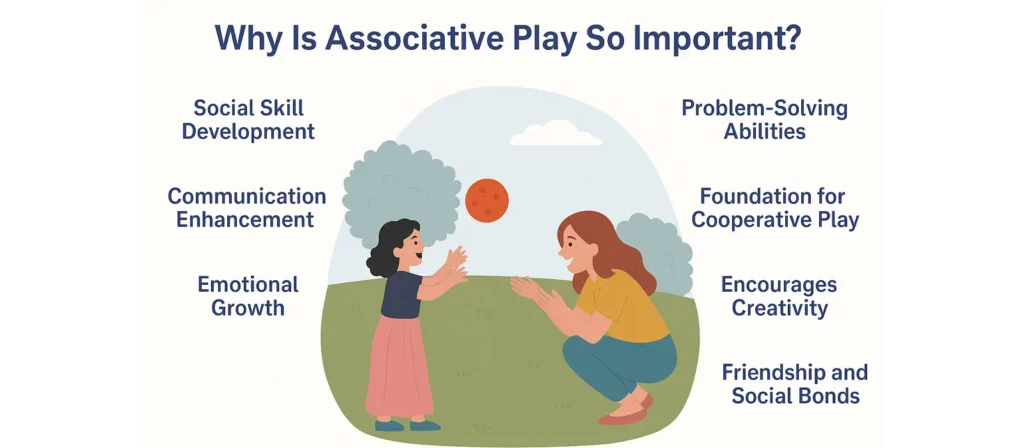
1. Social Skill Development
Associative play helps children develop essential social skills, such as taking turns, sharing, and engaging in simple conversations. These skills are foundational for successful peer interactions and cooperation in group settings.
2. Communication Enhancement
Through dialogue and interaction, children enhance their verbal communication abilities. They learn new vocabulary, practice sentence formation, and develop an understanding of social cues in conversations.
3. Emotional Growth
This stage fosters emotional intelligence as children recognize and respond to others’ emotions. They develop empathy, learn to comfort peers, and understand how to express their feelings appropriately.
4. Problem-Solving Abilities
When conflicts arise during associative play—such as disagreements over toys—children learn to resolve differences through negotiation and compromise. These experiences strengthen their problem-solving and conflict-resolution skills.
5. Foundation for Cooperative Play
Associative play lays the groundwork for more advanced cooperative play, where children engage in shared goals and structured activities. The skills learned during this stage—such as collaboration and communication—are essential for successful teamwork.
6. Encourages Creativity
Unstructured play during this stage sparks imagination and creativity. Children learn to think flexibly and adapt their ideas based on peer interactions, promoting cognitive growth.
7. Friendship and Social Bonds
Associative play allows children to form friendships and social connections, enhancing their sense of belonging. These early relationships help build confidence and social competence in future interactions.
Associative Play Examples
To better understand how associative play unfolds, here are examples of associative play that show children engaging with their peers in meaningful yet loosely structured ways:
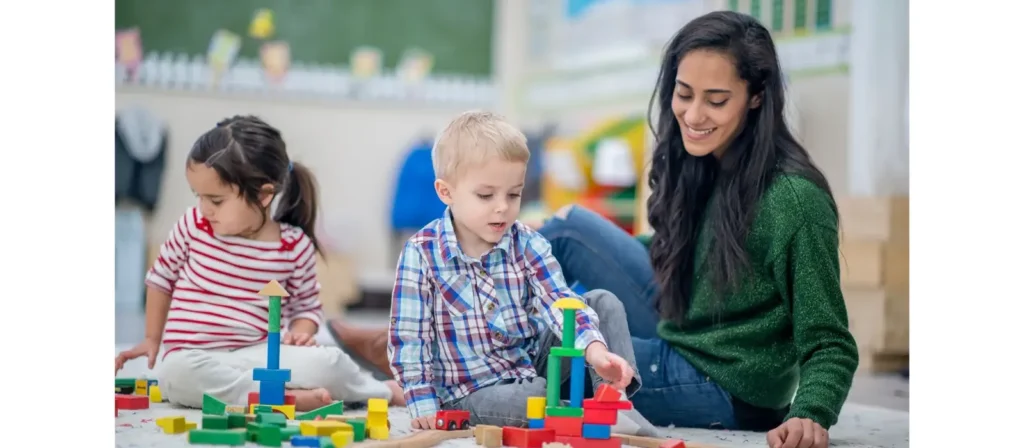
1. Toy Sharing and Turn-Taking
Two children playing with building blocks may each work independently on their structures but occasionally share pieces. One child might hand a block over to the other, and the two might talk about what they’re building, exchanging ideas and occasionally offering suggestions. However, they aren’t working on a single, coordinated project.
2. Parallel Play with Interaction
Children engaged in parallel play might each be coloring on their sheets of paper, but one child might comment on the colors the other is using or ask, “What are you drawing?” They play separately but still interact and show interest in each other’s activities, signaling the beginning of associative play.
3. Mimicking and Role Imitation
In a pretend play scenario, one child might pretend to be a doctor, using a toy stethoscope, while another child joins in by pretending to be the patient. While they are not strictly coordinating their actions, they imitate each other’s behaviors and engage in conversation, such as “I need a checkup!” This reflects an early form of role-playing and mutual social involvement.
4. Commenting on Shared Activities
One child might build a castle during a sandbox activity while another works nearby. The second child may comment, “I think we should make a moat around your castle!” This shared interest in each other’s activities, combined with verbal interaction, is a key feature of associative play.
5. Simple Group Play Without a Goal
Children might gather around toys, such as dolls or cars. Each child plays with the toys in their way but occasionally talks to the others, like “My doll can sing!” or “I’m going to drive my car.” They play together and share space and toys without coordinated plans or goals.
6. Imitative Games
Two children might pretend to cook together with toy kitchen sets. One child imitates stirring a pot, and the other follows suit, repeating the actions and even taking turns with the utensils. The children are not working toward a specific goal but are mimicking each other’s actions and interacting through the shared activity.
Common Challenges in Associative Play
While associative play is an important developmental stage, it often comes with challenges that children must navigate as they interact with others. Here are some of the most common difficulties encountered during this phase, along with strategies to help overcome them:
1. Difficulty Sharing Toys or Space
One of the most frequent challenges in associative play is difficulty sharing toys or play space. Young children are still learning the concept of ownership and may struggle with taking turns or allowing others to use their toys.

Solution:
Encourage turn-taking and model how to share. You can also introduce simple games that require sharing, like passing a ball back and forth, to make the concept more enjoyable and understandable.
2. Conflicts Over Roles and Ideas
Children may occasionally disagree on how to play or what to do. For example, in a pretend play scenario, one child may want to play the doctor while another insists on being the patient. These disagreements can lead to frustration and even minor conflicts.
Solution:
Guide children through conflict resolution by helping them negotiate and compromise. For example, suggest taking turns playing different roles or combining both ideas into one cohesive story. This not only helps resolve the issue but teaches valuable negotiation skills.
3. Overwhelming Social Interactions
Engaging in associative play can be overwhelming for some children, especially those more introverted. They might prefer to play alone or be hesitant to interact with peers.
Solution:
Encourage gentle socialization and give children time to adjust. Start with small, low-pressure activities and gradually increase their comfort with interacting. Respect their need for personal space when necessary.
4. Lack of Verbal Communication
Some children may not fully develop the communication skills necessary to engage in meaningful interactions during associative play. This can result in minimal verbal exchange or difficulty expressing their ideas to peers.
Solution:
Support language development by encouraging verbal interaction and prompting conversations. For example, ask open-ended questions like “What are you building?” or “Can you show me how to play?” to encourage communication during play.
5. Shifting Friendships and Group Dynamics
In associative play, children may frequently change who they interact with, sometimes leading to feelings of exclusion or confusion. One child might move from group to group or may feel left out when a peer forms a stronger bond with someone else.
Solution:
Foster an inclusive environment by promoting group activities that encourage cooperation and teamwork. Ensure that all children are involved and encourage them to take turns being the leader or making decisions within the group.
6. Impulsive Behavior and Lack of Control
Because associative play often involves a mix of independent play and social interaction, children may struggle to control impulsive behaviors like interrupting others, grabbing toys, or dominating the conversation.
Solution:
Teach and reinforce basic social rules, such as waiting for turns, using polite language, and respecting others’ space. When children demonstrate patience or good behavior, positive reinforcement can help them internalize these social norms.
How to Promote Associative Play at Home and School
Encouraging associative play in home and school settings is crucial for helping children develop social, emotional, and communication skills. Whether you are a parent or an educator, there are several ways to create a learning environment where children can naturally engage in associative play. Here are effective strategies for promoting this type of play:

1. Create Opportunities for Group Play
Children learn best through interaction, so providing opportunities for group play is key. At home, you can arrange playdates with peers, while at school, organize group activities or games that require minimal structure but encourage social interaction. The goal is to allow children to explore social dynamics in a relaxed, unstructured setting.
2. Provide Shared Toys and Materials
Offer toys and materials that naturally invite collaboration. Items like building blocks, art supplies, or board games can encourage children to engage with each other while pursuing their creative ideas. These toys also foster sharing and cooperative behaviors, essential in associative play.
3. Be a Role Model for Social Interaction
Children learn by observing the adults around them. Model positive social interactions, such as sharing, taking turns, and conversing. Children who see adults interact respectfully and cooperatively are likelier to imitate these behaviors in their play.
4. Encourage Verbal Communication
During associative play, children begin to engage in verbal exchanges. Encourage this by asking open-ended questions like, “What are you building?” or “Can you tell me about your game?” This promotes both communication skills and social interaction. It also helps children practice sharing ideas and learning from one another.
5. Provide Structured Play Activities with Flexibility
While structured games and activities are important, allowing room for flexibility is equally important. Structured games like cooperative puzzles or group-building projects help children learn the basics of collaboration. At the same time, unstructured play with minimal guidelines encourages children to experiment and develop social strategies.
6. Encourage Role-Playing and Pretend Play
Pretend play is a natural part of associative play. Encourage role-playing activities, such as playing house, pretending to be animals, or acting out different professions. These activities encourage creativity and help children practice social roles and develop empathy as they take on the perspectives of others.
7. Monitor Group Dynamics
At times, children may have difficulty navigating group dynamics during associative play. As a caregiver or educator, observe the interactions to ensure everyone is involved. If conflicts arise, help guide children in conflict resolution by encouraging them to communicate their feelings and find solutions together.
8. Create a Safe, Inclusive Environment
Ensure that every child feels included in group activities. Children should be encouraged to interact with others, and no one should be left out. This promotes healthy social interactions and ensures that all children can practice the skills necessary for associative play.
9. Praise Social Behaviors
Reinforce positive behaviors during associative play by offering praise when children share, cooperate, or engage in meaningful conversations. Positive reinforcement helps children understand the value of these social interactions and motivates them to continue practicing them.
Understanding the Stages of Play: A Comparison
As children grow, their play evolves through different stages, each contributing to their social and cognitive development. Associative play is a key transitional phase where children begin interacting with peers while maintaining their individual play goals. However, their play changes as children develop, moving from more loosely connected interactions to cooperative, goal-oriented activities. To better understand these transitions, here are two comparative tables highlighting the key differences between associative play and parallel play, as well as associative play and cooperative play.
Associative Play Vs Parallel Play
| Aspect | Associative Play | Parallel Play |
|---|---|---|
| Age Range | Typically between 3-4 years | Common between 2-3 years |
| Interaction | Children interact with each other (sharing, commenting) | Children play side by side without interacting |
| Goal | No shared goal, but social interactions occur | Loose structure: independent activities within a shared space |
| Communication | Active verbal exchange, such as sharing ideas and talking | Minimal communication, often silent or nonverbal |
| Social Development | Promotes cooperation, empathy, and social skills | Limited social development; more focused on independent play |
| Play Structure | Loose structure; independent activities within a shared space | No structure; children engage in parallel activities |
| Toy Sharing | Sharing toys and resources, sometimes with conflict | Rarely shares toys; plays independently with own materials |
| Cooperation | Begins to develop; children may cooperate or help each other | No cooperation; children are self-focused |
Associative Play Vs Cooperative Play
| Aspect | Associative Play | Cooperative Play |
|---|---|---|
| Age Range | Typically between 3-4 years | Typically between 4-6 years |
| Interaction | Clear, shared goal; roles are assigned, and responsibilities are defined | Children work together with a shared goal or purpose |
| Goal | No coordinated goal; individual play with social interaction | Verbal exchange, sharing ideas, and commenting on each other’s actions |
| Communication | No roles are assigned, everyone plays individually | Active communication and negotiation to achieve the shared goal |
| Social Development | Encourages social awareness, sharing, and basic cooperation | Promotes teamwork, problem-solving, and leadership skills |
| Play Structure | Loose, unstructured play with occasional coordination | Structured play with clear rules, roles, and planning |
| Toy Sharing | Frequent sharing of toys, but without joint effort in play | Toys are shared and used collaboratively to achieve a goal |
| Role Assignment | Conflicts may arise due to differing ideas or toy-sharing | Specific roles are assigned within the group for a common objective |
| Conflict Resolution | No roles are assigned; everyone plays individually | Conflicts are resolved through negotiation and compromise to achieve the goal |
結論
In summary, associative play is a vital stage in early childhood that bridges the gap between solitary play and more complex social interactions. During this stage, children begin engaging with their peers, sharing toys, exchanging ideas, and participating in joint activities while maintaining their individual play goals. Although it may appear unstructured, associative play plays a crucial role in developing social, emotional, and communication skills, laying the foundation for future cooperative play.
Understanding the differences between associative, parallel, and cooperative play is essential for parents, caregivers, and educators. By recognizing these stages, adults can provide the right support and environment to encourage healthy social development in children. Whether at home or school, fostering a learning environment that promotes associative play helps children build critical skills such as empathy, problem-solving, and teamwork, essential for their success in both social and academic settings.
Ultimately, supporting children through the associative play stage helps nurture well-rounded individuals who can navigate complex social dynamics and develop lasting, positive relationships. Encouraging interaction, communication, and shared activities contributes to a child’s overall well-being and developmental growth.
Discover Our Full Range of Products
Get access to our comprehensive catalog featuring top-quality furniture and play equipment for kindergartens and schools.

